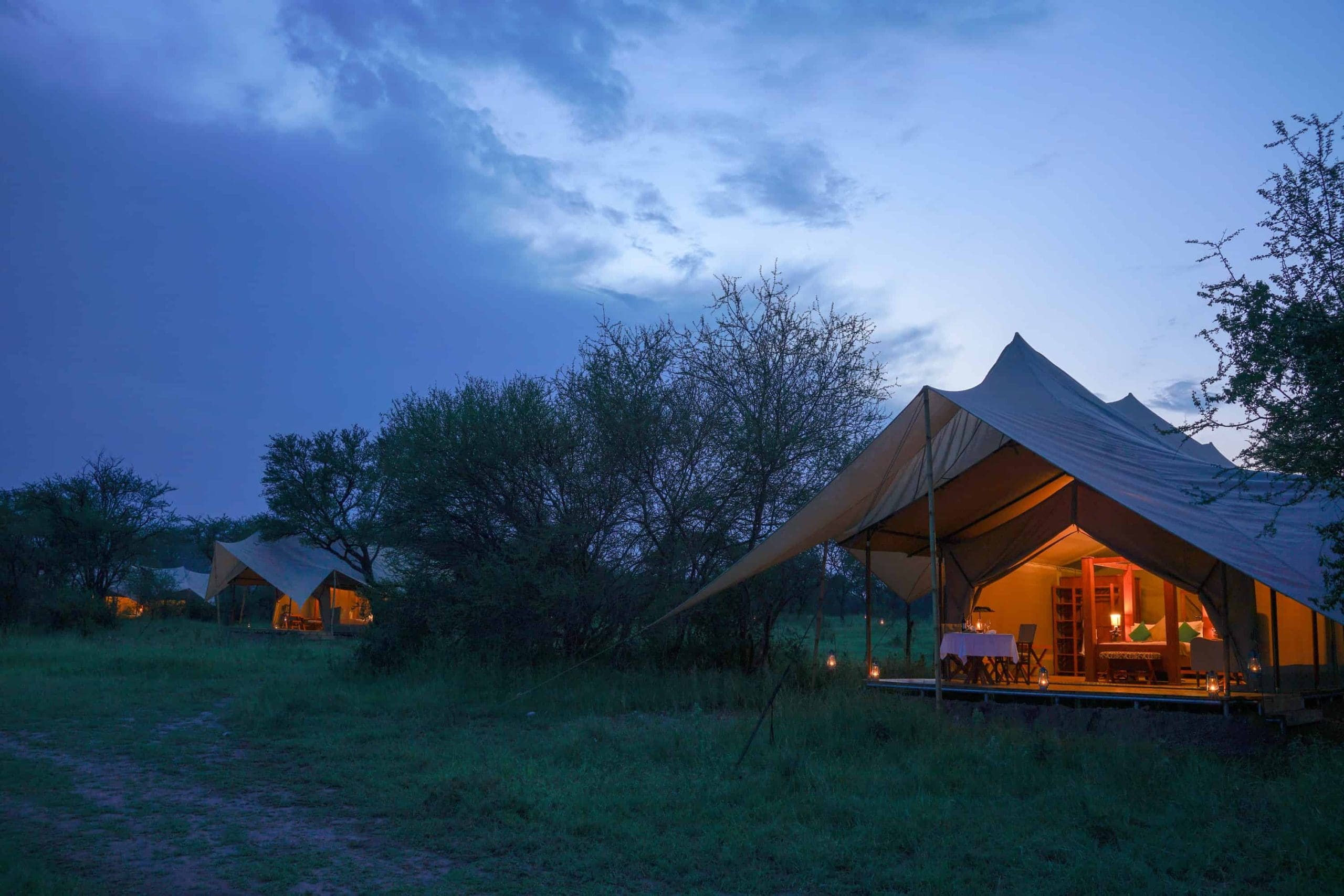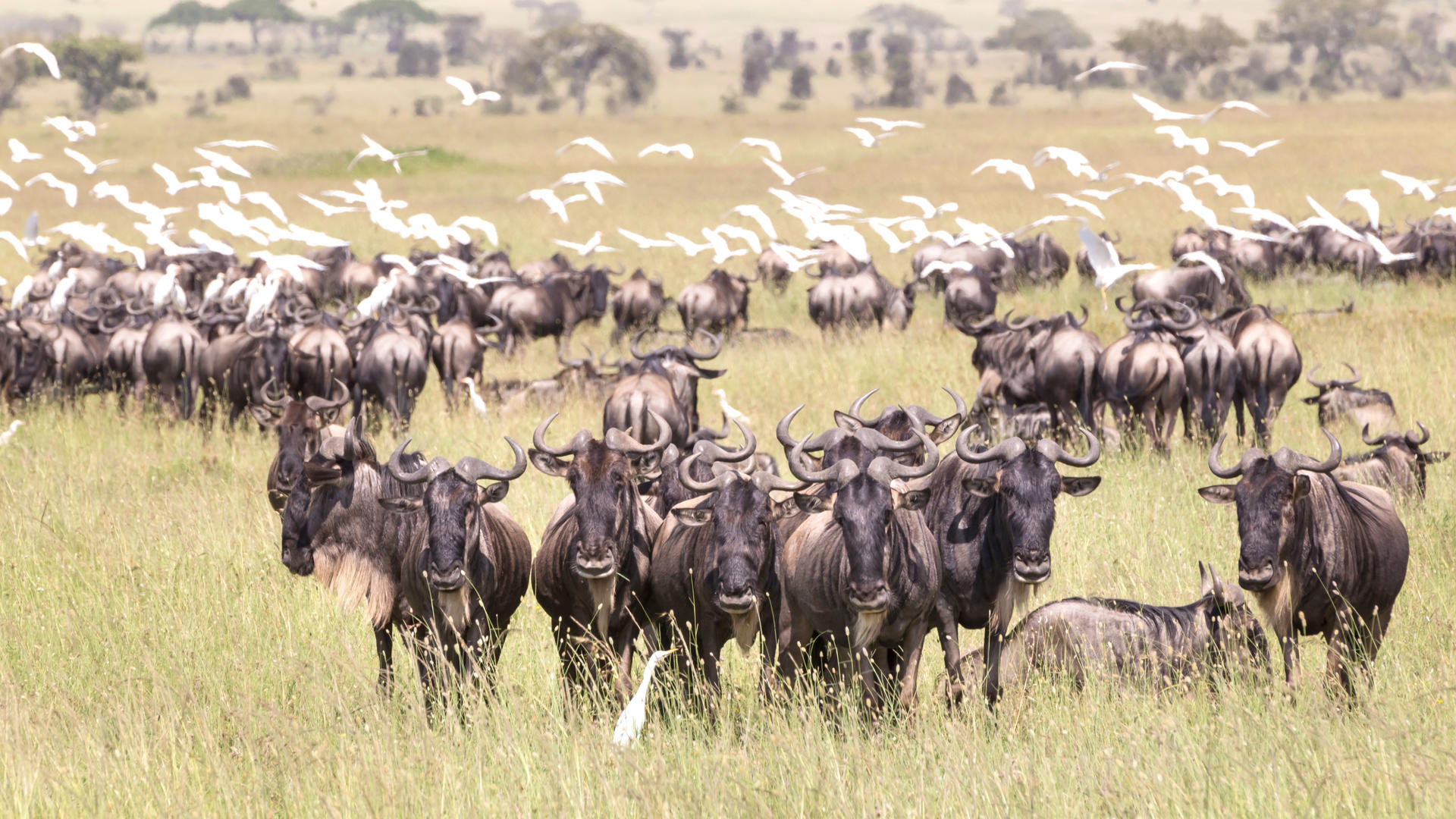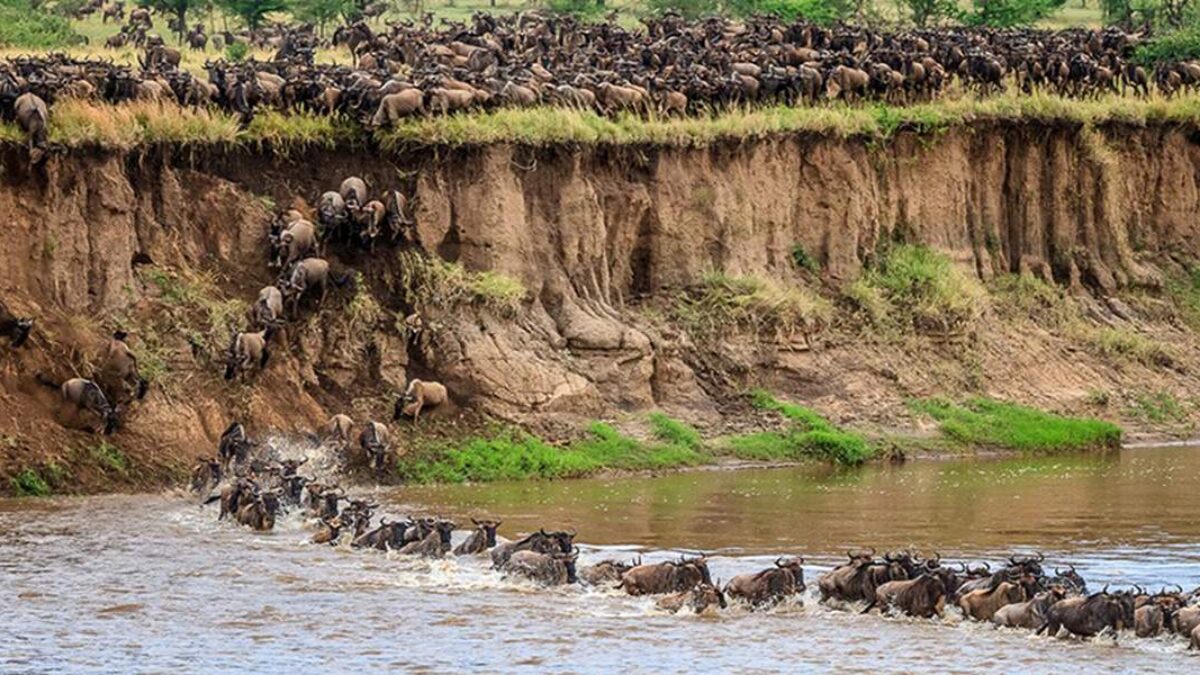Asanja Moru Camp offers incredible safari experiences year round, but the best time to visit depends on what you want to see:
June to October (Dry Season)
The dry season from June to October is the best time for wildlife viewing at Asanja Moru. During this period, the Serengeti’s vegetation is sparse, and water sources become limited, drawing large numbers of animals into concentrated areas. This makes it easier to spot wildlife, particularly big cats like lions, leopards, and cheetahs. The highlight of this season is the Great Migration, which passes through the region between June and July. Thousands of wildebeest and zebras traverse the Serengeti, facing dramatic river crossings and predator ambushes along the way. With clear skies, minimal rainfall, and comfortable temperatures, this season is ideal for safaris and photography.
December to March (Calving Season)
The period from December to March is an extraordinary time to visit, as it marks the wildebeest calving season. During this time, over half a million wildebeest give birth on the southern Serengeti plains, attracting an abundance of predators such as lions, hyenas, and cheetahs. The landscape is lush and green due to the short rains in November and December, creating a stunning photographic backdrop. With warm temperatures and plenty of newborn animals, this season offers one of the most action-packed wildlife experiences in the Serengeti.
April & May (Green Season)
April and May are considered the low season due to the long rains, but they offer a completely different and more tranquil experience. The Serengeti transforms into a lush paradise, with fewer visitors and more exclusive game drives. While occasional heavy rains occur, they typically happen in the late afternoons or evenings, allowing for good wildlife viewing during the day. This season is perfect for travelers seeking solitude, breathtaking scenery, and discounted rates at luxury camps.

















